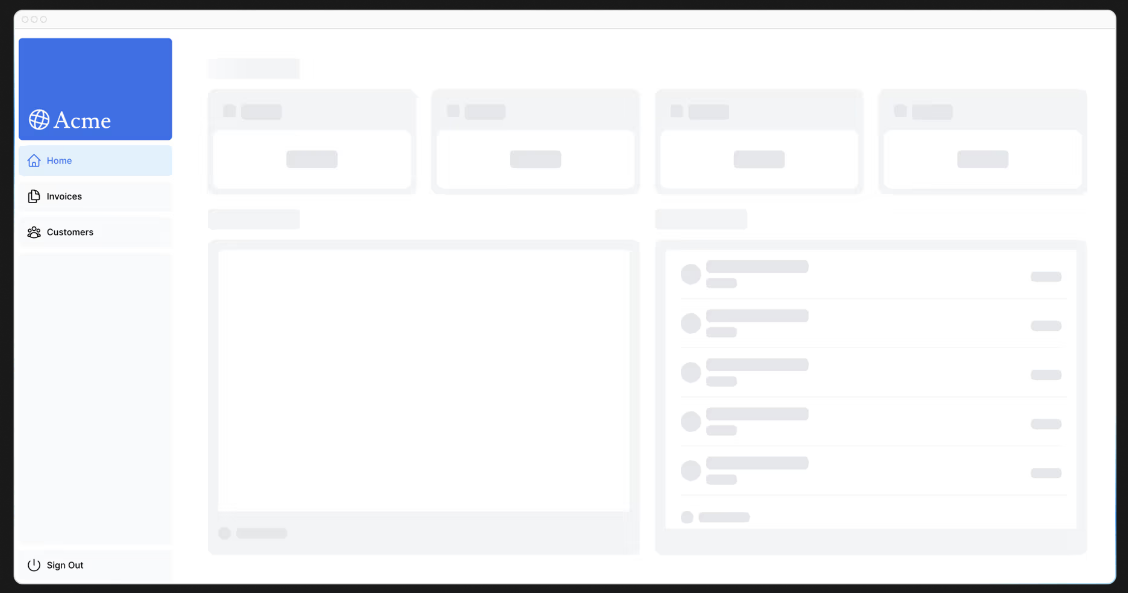Streaming
A data transfer technique that allows you to break down a route into smaller “chunks” and progressively stream them from the server to the client as they become ready
- using this, you can prevent slow data requests from blocking your whole page
- works well with react components as each component can be considered a chunk
- https://nextjs.org/learn/dashboard-app/streaming <<
Ways to implement
Addingloading.tsx
- At the page level, add a
loading.tsxfile (which creates<Suspense>for you). loading.jsxis a special Next.js file built on top of React Suspense- allows you to create a fallback UI to show as a replacement while content loads
- You can add loading skeletons

React suspense component
What
- Allows you to “suspend” the rendering of a part of your UI while something (like data) is being loaded.
- You wrap a component that might take time to render (usually because it’s waiting for data) within a
<Suspense>boundary and provide afallbackprop. Thisfallbackprop specifies what UI should be displayed while the component inside is loading.
- At the component level, with
<Suspense>for more granular control. - instead of letting the slow component block the whole page, u can use suspense to stream only this component and immediately show the rest of the page
// page.tsx
<Suspense fallback={<RevenueChartSkeleton />}>
<RevenueChart />
</Suspense>
// RevenueChart.tsx
export default async function RevenueChart() {
const chartHeight = 350;
const revenue = await fetchRevenue(); // Fetch data inside the component
return (
...// rest of code
)- If you’re getting multiple data at once for one section, you can place them inside a wrapper
Suspense boundaries
(no one right answer)
- You could stream the whole page like we did with
loading.tsx… but that may lead to a longer loading time if one of the components has a slow data fetch. - You could stream every component individually… but that may lead to UI popping into the screen as it becomes ready.
- You could also create a staggered effect by streaming page sections. But you’ll need to create wrapper components